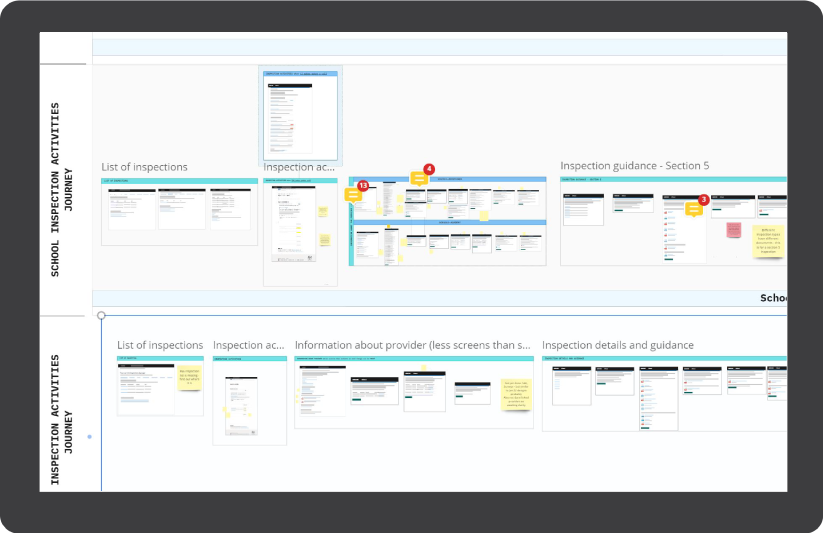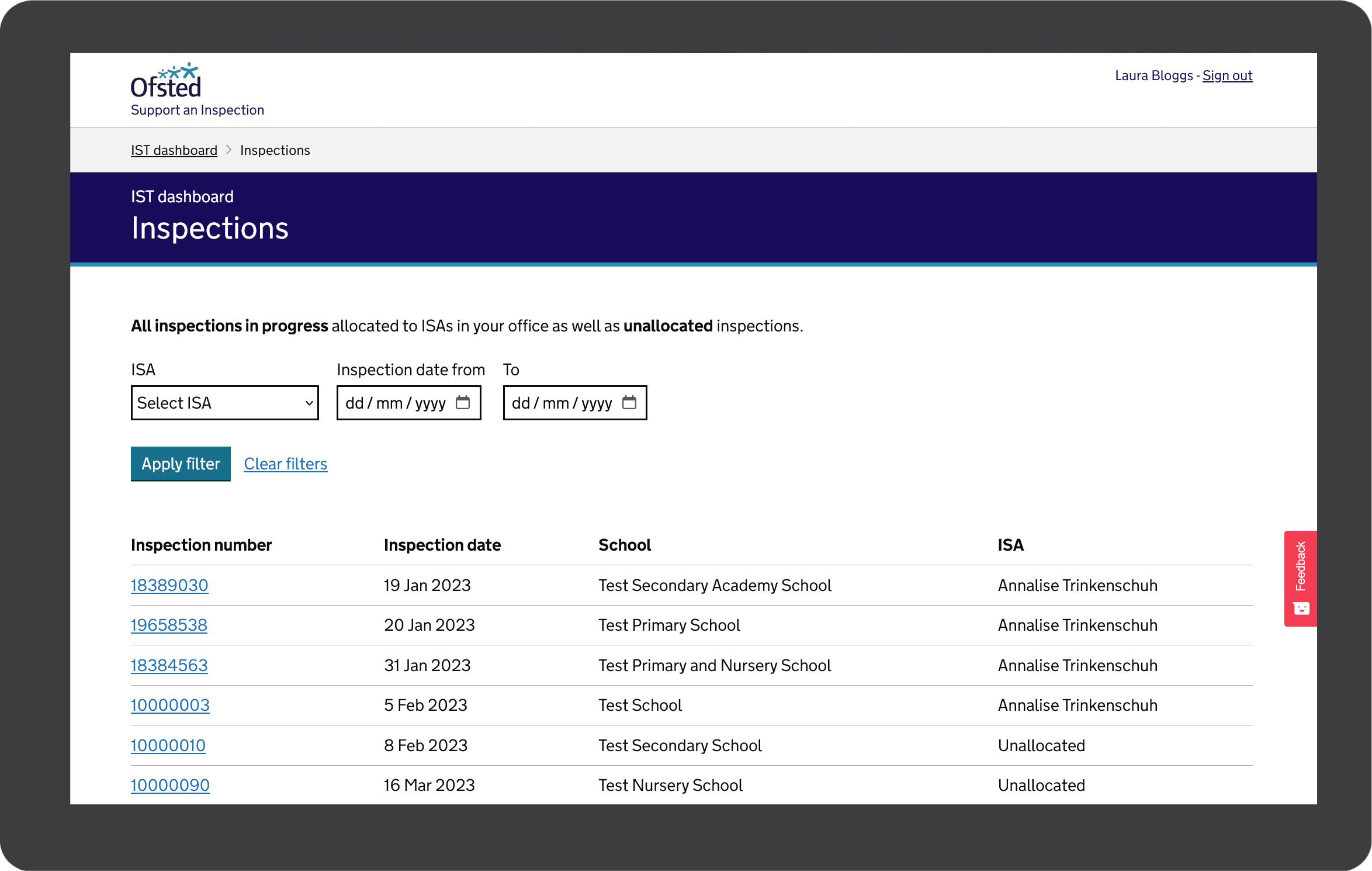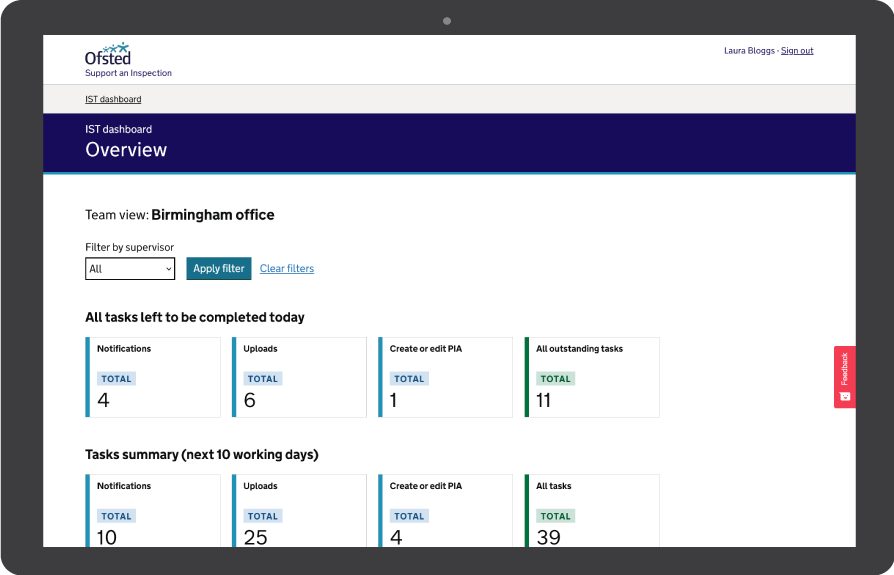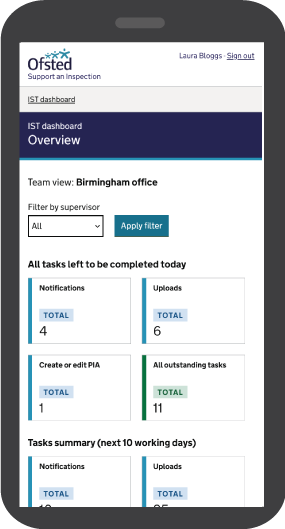OUR WORK OFSTED
Ofsted is the Office for Standards in Education. Ofsted inspect services providing education and skills for learners of all ages.
Web Farm Media helped Ofsted deliver the user experience and interaction design for their new internal inspection services platform.

ABOUT PROJECT
Web Farm Media helped Ofsted deliver the user experience and interaction design for their new internal inspection services platform.
PROJECT INTRODUCTION
The Ofsted inspection services application is a critical tool used by inspectors and inspection administrators to assess the quality of education and the overall learning environment of providers. It is an essential application for ensuring that providers are meeting the standards and requirements set by education regulatory bodies.
THE PROBLEM
The current school inspection application had several issues that needed to be addressed.
Firstly, the application is outdated, making it challenging to use. Secondly, the application lacked essential features, making the process of school inspections tedious and time-consuming. Finally, the application was not accessible to users with certain needs.
OUR OBJECTIVES
Understand the current user journey and pain points of school inspectors using the existing application.
Identify features that are missing from the current application that would improve the inspection process.
Redesign the application with a user-centred approach, ensuring the application is easy to use and efficient for school inspectors and inspection administrators.
THE PROJECT TEAM
Web Farm Media worked alongside an Ofsted team consisting of:
- Product Managers
- Product Owners
- User Researchers
- Content Designer
- UX/UI Designer (that’s us)
- Front End Developers
- Back End Developers
- Testers
THE USERS AND AUDIENCES
The users and audiences for the application were as follows:
- HM Inspectors
- Ofsted Inspectors
- Ofsted Inspection Administrators
PROJECT APPROACH
We worked with Ofsted users, product owners and user researchers to gather requirements for the new inspection services application.
USER RESEARCH
To begin the research phase, we worked with Ofsted User Researchers to interview school inspectors and inspection administrators to understand their needs and pain points.
The research revealed the following key findings:
- Outdated user interface
- Difficult to navigate
- No integration with other systems
- The language used in the application was difficult to understand
- Need for a mobile version of the application
USER JOURNEY
Based on the user research, we started to design the user journey.
This involved mapping out the various touchpoints the users had with the product, from initial awareness to final conversion.
Key tasks included:
- Define user personas
- Identify the key tasks
- Map out the user journey
- Test and refine


WIREFRAMES & PROTOTYPING
We created low-fidelity wireframes to quickly iterate on design ideas, followed by high-fidelity prototypes that more accurately represented the final product.
After that, we developed a functional prototype using HTML and JavaScript. We found this was a valuable step in the project approach, as it allows us to create a functional version of the design that can be tested and refined.
The prototype could then be used to gather feedback from users and stakeholders, test the usability of the design, and identify any potential issues before moving on to more advanced development processes.
USER TESTING
User testing was a key part of the project approach, as it allowed us to gather feedback on the design from real users. This feedback helped us identify usability issues, design flaws, and areas for improvement.
It was important to conduct testing at every stage of the design process to ensure a high-quality user experience.
ITERATE AND REFINE
Iterating and refining was an essential step in the project that involved continually improving the design based on user feedback and testing.
This included the following:
- Analyse feedback
- Prioritise changes
- Test changes
- Iterate and repeat
- Consider new feedback
- Maintain consistency
OUTCOME
The new design of Ofsted's inspection services application is expected to have a significant impact on the Ofsted and the education sector.
IMPROVED USER EXPERIENCE
By redesigning the application, it became more user-friendly, intuitive, and efficient
This makes it easier for school inspectors and inspection administrators to navigate the system and conduct their inspections and daily tasks effectively.
ENHANCED FUNCTIONALITY
Including new features and functionalities shall improve the inspection process. Allowing inspectors to focus more on the inspection itself and less on administrative tasks.

ALL DEVICES
Producing a mobile first application allows school inspectors to conduct inspections on the go, without the need for a laptop or desktop computer. This provides greater flexibility and mobility, enabling inspectors to perform inspections from anywhere, at any time.
ACCESSIBILITY
The focus on accessibility could make it easier for users with physical limitations to conduct inspections and input data, making the inspection process more inclusive.

